Key takeaways
- Mastering Godox lighting basics, such as power levels and color temperature, can dramatically enhance photo quality.
- Choosing the right Godox equipment should match your shooting style for consistency; versatility is key.
- Small adjustments in light positioning and power can significantly improve images, highlighting the importance of experimentation.
- Keep a personal record of preferred setups to streamline the creative process and foster confidence in your lighting techniques.
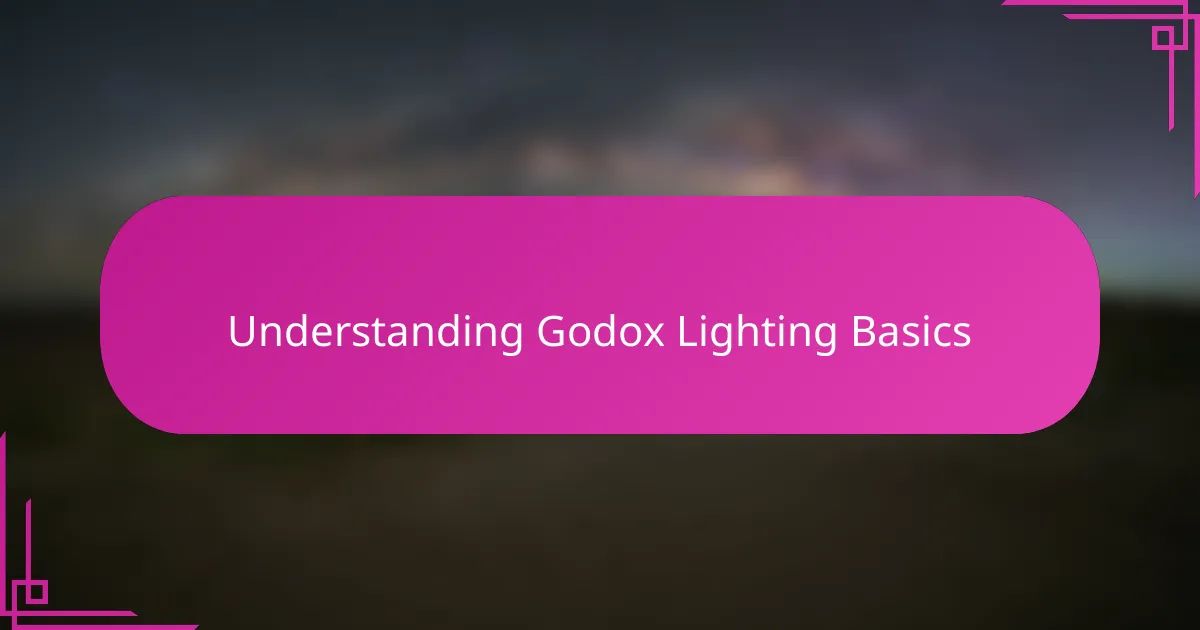
Understanding Godox Lighting Basics
When I first started using Godox lighting, I was struck by how intuitive their system is. The basics like adjusting power levels and understanding color temperature might seem simple, but mastering them truly transforms the quality of your photos. Have you ever noticed how even a slight shift in lighting can completely change the mood of an image? That’s where understanding these fundamentals becomes a game-changer.
One feature I appreciate most in Godox gear is the seamless integration between their flashes and triggers. It’s not just convenience—it gives you confidence during a shoot, knowing your lights will sync perfectly without fail. This kind of reliability lets me focus more on creativity rather than technical hiccups.
From my experience, getting comfortable with Godox lighting basics also means experimenting with modifiers like softboxes or grids. These tools shape light in ways that reflect your personal style, and I find it thrilling each time I uncover a new way to highlight my subject. Have you tried switching modifiers to see how it affects the final image? That curiosity is what pushed me to explore deeper.
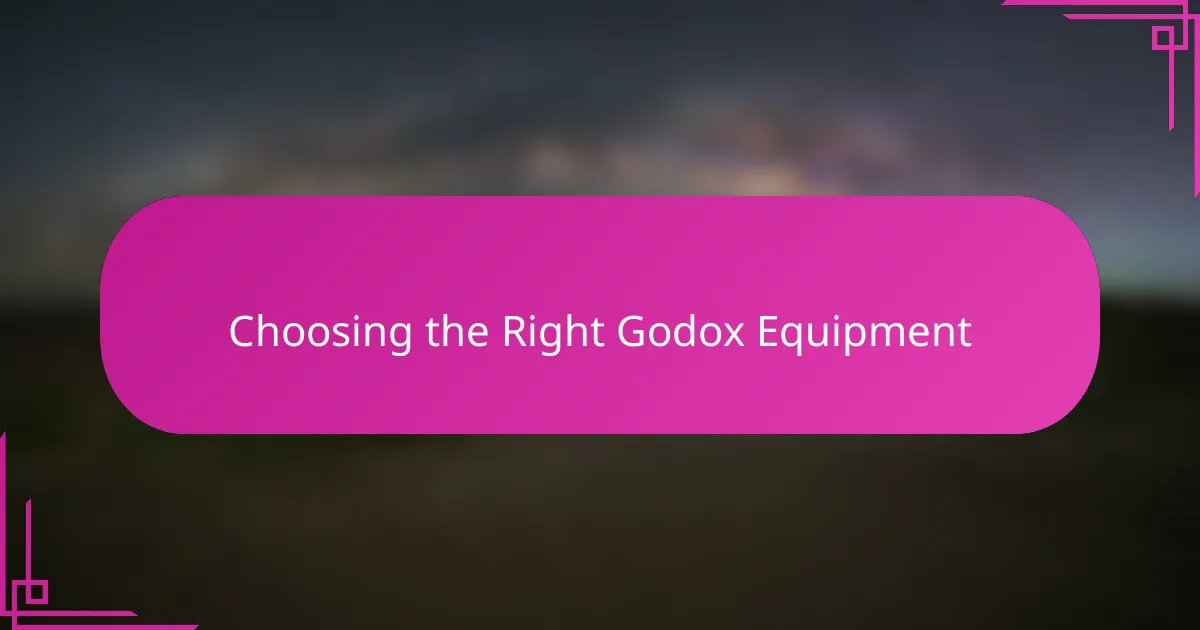
Choosing the Right Godox Equipment
Choosing the right Godox equipment felt overwhelming at first because their lineup is so diverse. I remember staring at the options and wondering, “Do I really need a strobe or will a speedlight do the job?” It took me some time to realize that matching the gear to my shooting style and subjects was key to getting consistent results.
What helped me most was focusing on versatility. For instance, the Godox AD200’s portability lets me move quickly between locations without sacrificing power. Have you ever struggled with bulky equipment on the go? This little flash changed the game for me, balancing convenience and capability in one package.
I also learned to think about control and support accessories early on. Choosing reliable triggers like the Godox X2T made wireless syncing effortless, which freed me to concentrate on composition instead of worrying about connection issues. And trust me, having a trusted trigger feels like having a solid teammate during intense shoots.
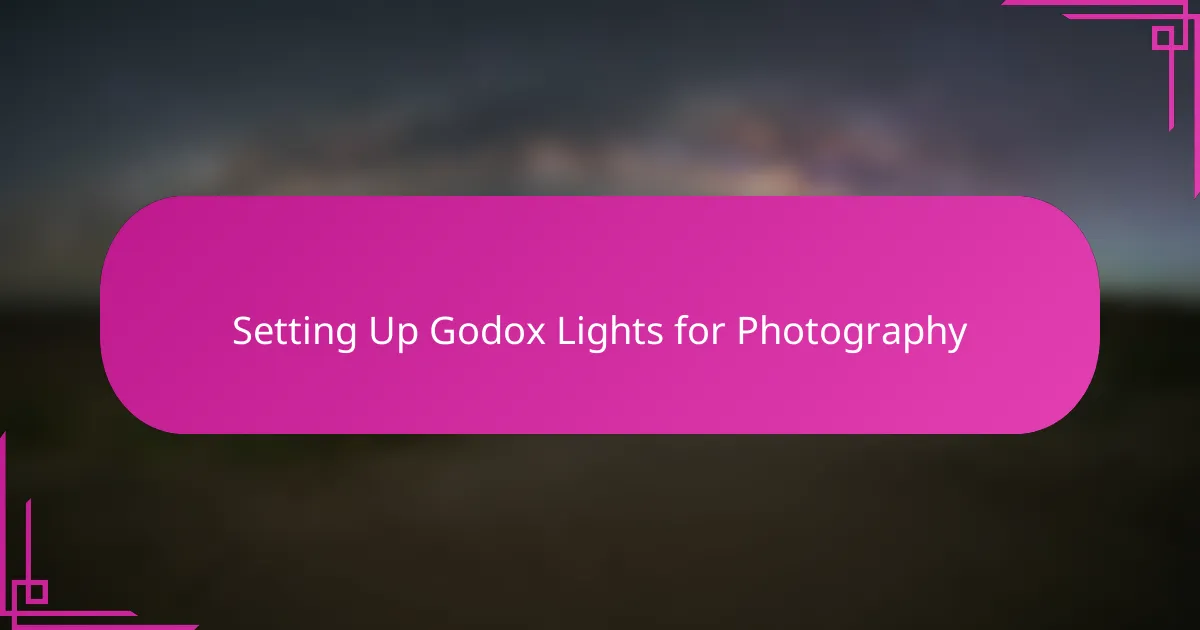
Setting Up Godox Lights for Photography
Setting up Godox lights for me always begins with carefully positioning each unit to sculpt the scene just right. I remember a shoot where moving a single light by just a few inches completely erased an unwanted shadow, transforming the entire image. Have you ever found that a tiny adjustment makes all the difference? That attention to detail is key when working with Godox lights.
Next comes dialing in the power settings, which I treat almost like tuning an instrument. At first, it felt like guesswork, but through trial and error, I learned to balance brightness without blowing out highlights or losing detail in the shadows. This process might seem tedious, but nailing the exposure with Godox lighting gives me total control over the final look.
Finally, I always test my setup with quick test shots and make on-the-fly tweaks. Sometimes I switch modifiers mid-shoot to change the light’s quality, like swapping a softbox for a grid when I want more focus and drama. Don’t hesitate to experiment—you’d be surprised how flexible Godox systems are once you get comfortable with them.
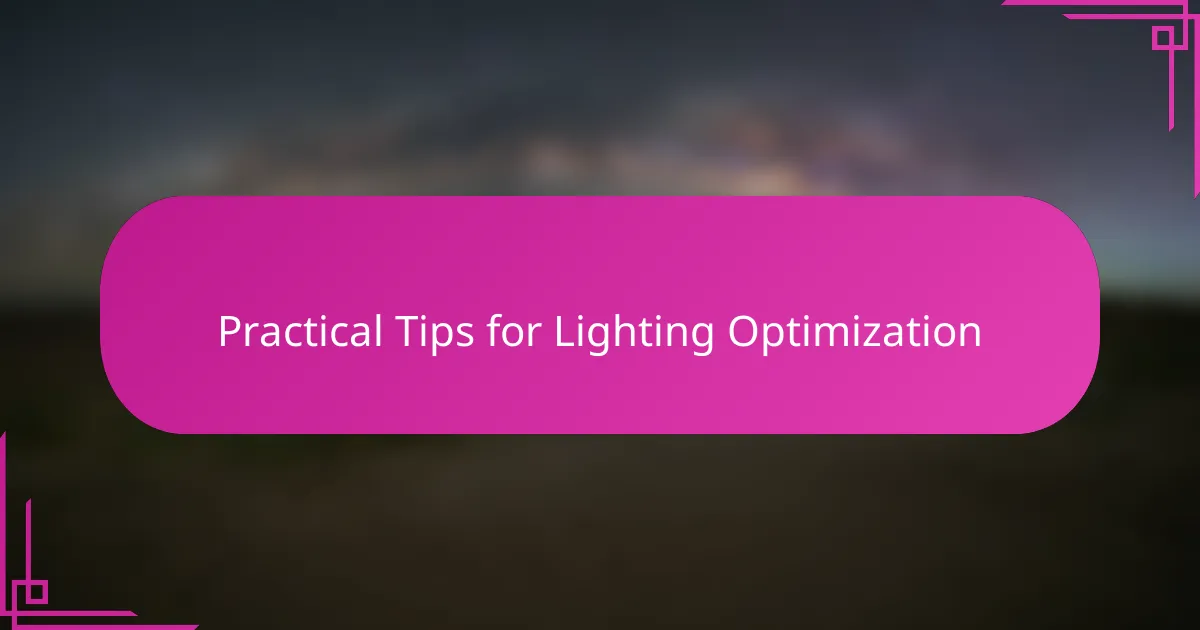
Practical Tips for Lighting Optimization
One thing I’ve learned is that placing your Godox lights at varying heights and angles can completely redefine your image’s depth. Have you ever noticed how a subtle backlight can add that perfect glow, separating your subject from the background? For me, these small tweaks feel like painting with light, turning flat scenes into something much more dynamic.
I often rely on adjusting the output power incrementally rather than making big jumps. It’s a bit like finding the right seasoning in cooking—you want just enough to enhance, never overpower. Getting this balance right took patience, but once I mastered it, my photos felt more natural and compelling.
Don’t overlook the power of modifiers, either. Swapping a softbox for a reflector or grid mid-session changed the mood drastically during one shoot, and it was downright exhilarating to see how quickly the light adapted. Have you experimented this way? It’s hands-on learning that transforms good lighting into great lighting.
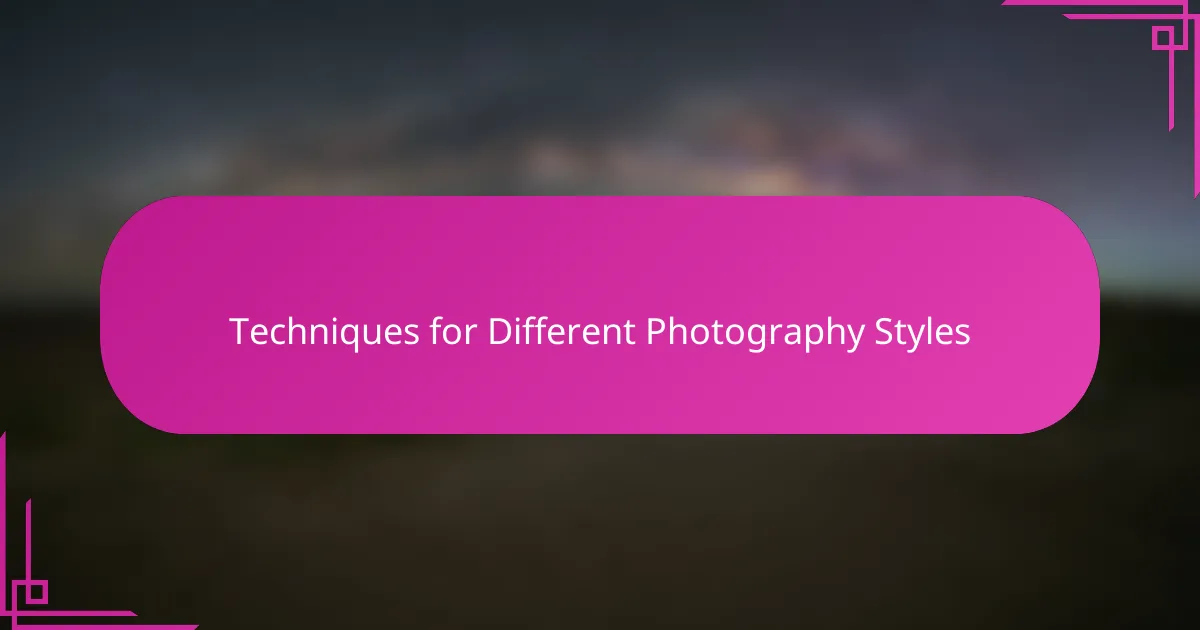
Techniques for Different Photography Styles
When I switch between portrait and product photography, I find myself adjusting the Godox light modifiers first. For portraits, a softbox gently wraps the subject in soft light, creating flattering skin tones. On the other hand, shooting products often calls for a grid to focus light sharply, revealing textures and details that matter.
Landscape photography presents another unique challenge. I typically use Godox flashes sparingly here, relying more on natural light but adding subtle fill with a diffuser or reflector when needed. Have you ever tried blending artificial light with ambient conditions? It’s like choreographing a dance where both light sources have to complement each other perfectly.
In more creative styles like conceptual or fine art photography, I enjoy experimenting with gels and multiple light placements. One session, I layered colored gels on Godox flashes to evoke a surreal mood, and the results were surprisingly powerful. Pushing these boundaries keeps my lighting setups fresh and sparks new ideas every time.
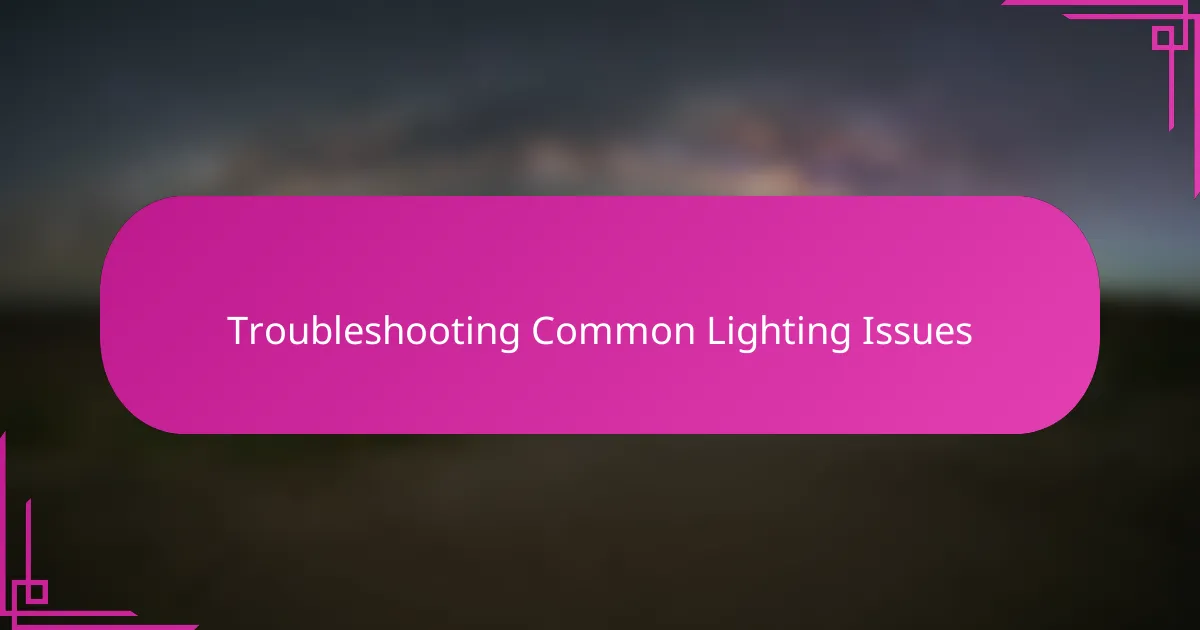
Troubleshooting Common Lighting Issues
One issue I often ran into was harsh shadows that spoiled what could have been a great shot. Tweaking the distance between the Godox light and my subject usually fixed this—closer lights soften shadows, while moving them back adds contrast. Have you noticed how tiny shifts in placement can suddenly make the lighting feel more natural?
Another tricky problem was inconsistent color temperature, especially when mixing ambient and artificial light. Godox’s adjustable color settings saved me here, but it took some trial and error to get a balanced look that didn’t feel cold or overly warm. I recall feeling frustrated until I realized dialing in the exact kelvin value was like tuning a guitar string—once nailed, everything just harmonized beautifully.
Sometimes, my images ended up with unwanted hotspots or blown-out highlights. In these moments, I learned that keeping an eye on power output and using diffusers helped tame those harsh bright spots. Have you ever been surprised at how simply adding a softbox or grid can rescue a scene that initially looked overexposed? It’s a small fix with a huge payoff.
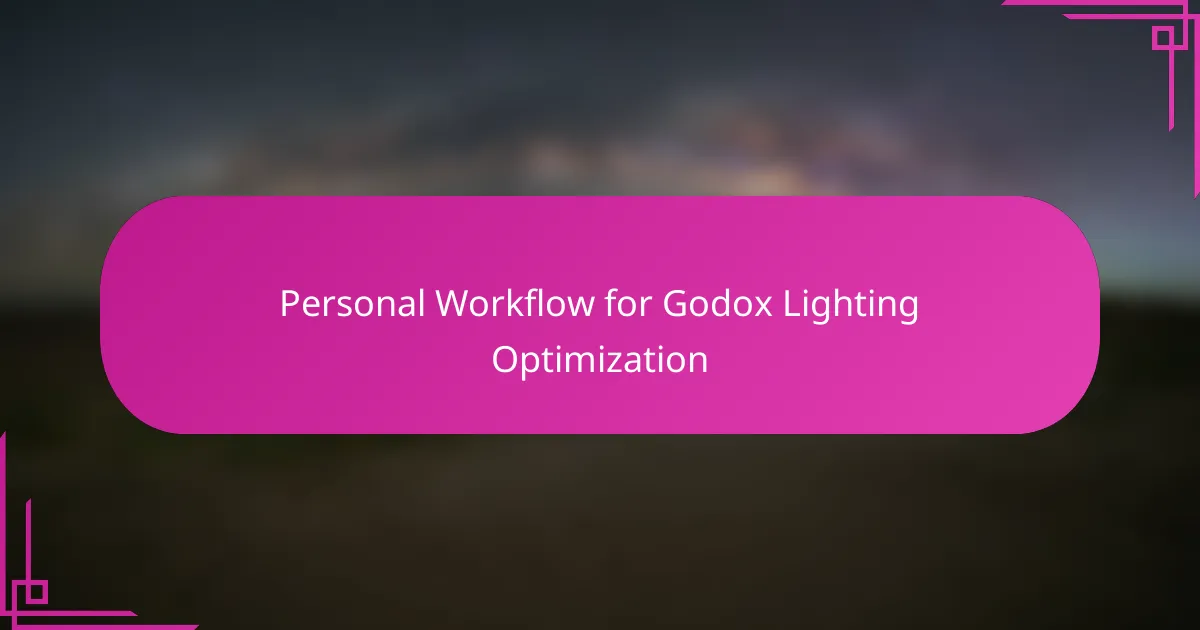
Personal Workflow for Godox Lighting Optimization
When it comes to my personal workflow for optimizing Godox lighting, I start by establishing a consistent routine with quick test shots. This habit lets me see how small changes in power or modifier placement affect the scene, and honestly, it’s like getting to know a new friend—each tweak reveals more personality. Have you ever experienced that satisfying moment when a tiny adjustment suddenly makes everything click? That’s the magic I chase every shoot.
I also make it a practice to keep notes on my favorite setups for different environments and subjects. Over time, these little records save me from reinventing the wheel and allow me to focus more on creativity instead of technical trial and error. Plus, it feels rewarding to build a personal lighting “playbook” that evolves with my style. Do you track your lighting setups? I find it boosts both confidence and consistency.
Finally, I embrace flexibility as a core part of my workflow. Sometimes unexpected lighting challenges pop up, and being able to rapidly swap modifiers or adjust output on the Godox system without fuss feels like having a secret weapon. That adaptability has saved more shoots than I can count. If you haven’t given yourself permission to experiment freely during a session, I highly recommend it—it’s where growth happens.